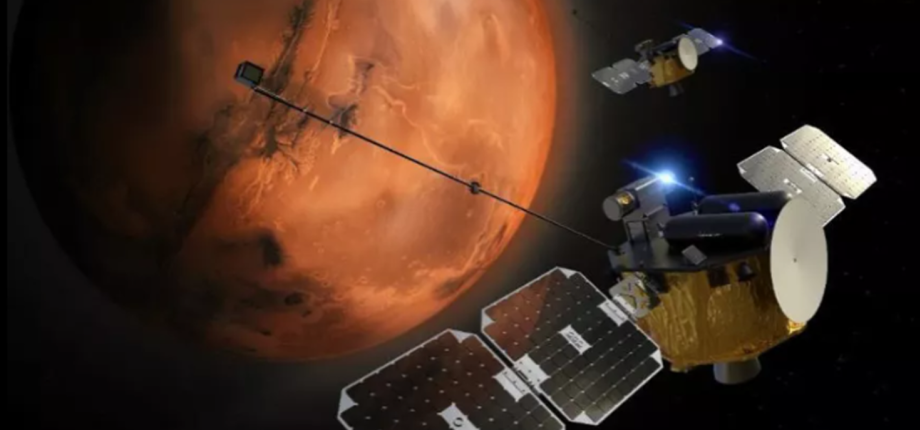Launch of the ESCAPADE mission to Mars

On November 13, 2026, at 8:55 pm (UTC), the New Glenn 2 rocket lifted off from the Kennedy Space Center (Cape Canaveral, Florida), carrying the two satellites of the ESCAPADE mission to Mars (PI: Rob Lillis, UC Berkeley). This spectacular launch, during which the first stage of the 98-meter-high rocket was successfully recovered, enabled the Blue and Gold satellites developed by the University of Berkeley and Rocket Lab to be placed into low-Earth orbit before their transfer to Mars.
The LPP, funded by the French National Center for Space Studies (CNES), is participating in this mission, which aims to study the magnetized environment of Mars as it interacts with the solar wind. The Space Plasmas team provided the detection electronics for the mission's electron spectrometer, which will measure these charged particles, whether they come from the solar wind or the Martian ionosphere. The satellites are also equipped with an ion spectrometer, a magnetometer, a Langmuir probe, and a camera.
ESCAPADE aura la capacité d’étudier la réponse de l’environnement martien aux variations du vent solaire, Blue et Gold étant positionnés en Septembre 2027 sur une orbite très excentrique avec un périgée à 160 km et une apogée dans le vent solaire à 8400 km. En caractérisant de manière précise les transferts d’énergie et de matière entre le vent solaire et la Planète, les données de la mission ESCAPADE permettront de mieux extrapoler les taux d’échappement actuels des constituants de l’atmosphère martienne au début de l’histoire de la planète et de reconstituer ainsi son évolution sur des milliards d’années.
ESCAPADE will be able to study the response of the Martian environment to variations in the solar wind, with Blue and Gold positioned in September 2027 in a highly eccentric orbit with a perigee of 160 km and an apogee in the solar wind of 8,400 km. By accurately characterizing the transfer of energy and matter between the solar wind and the planet, data from the ESCAPADE mission will make it possible to better extrapolate the current escape rates of the components of the Martian atmosphere at the beginning of the planet's history and thus reconstruct its evolution over billions of years.
LPP contact: Matthieu Berthomier (matthieu.berthomier@lpp.polytechnique.fr)





